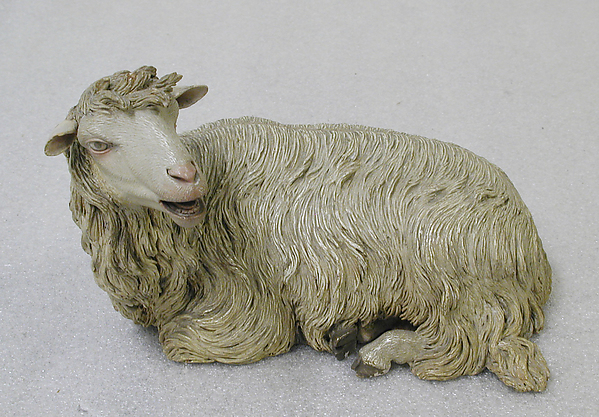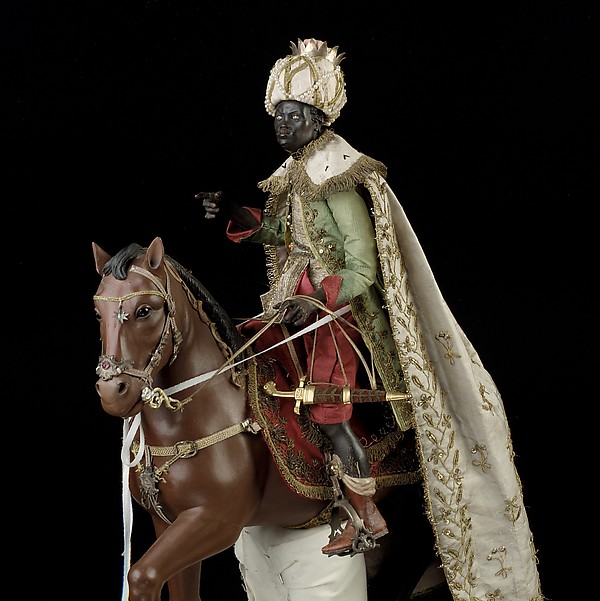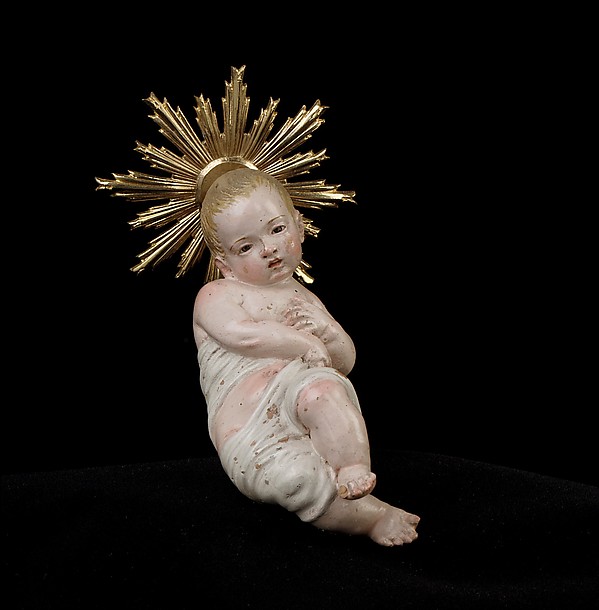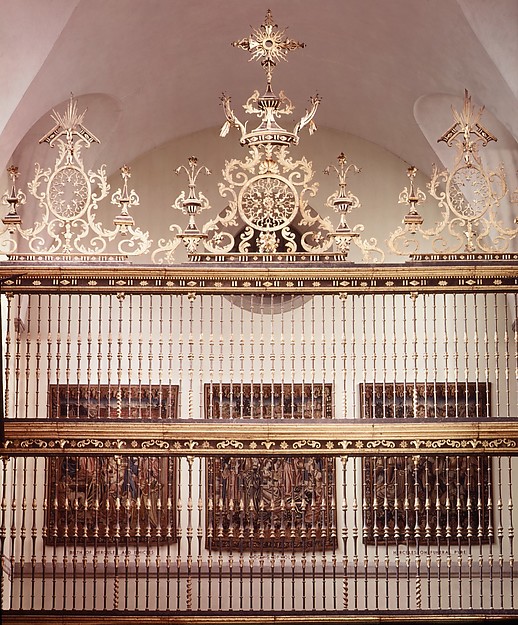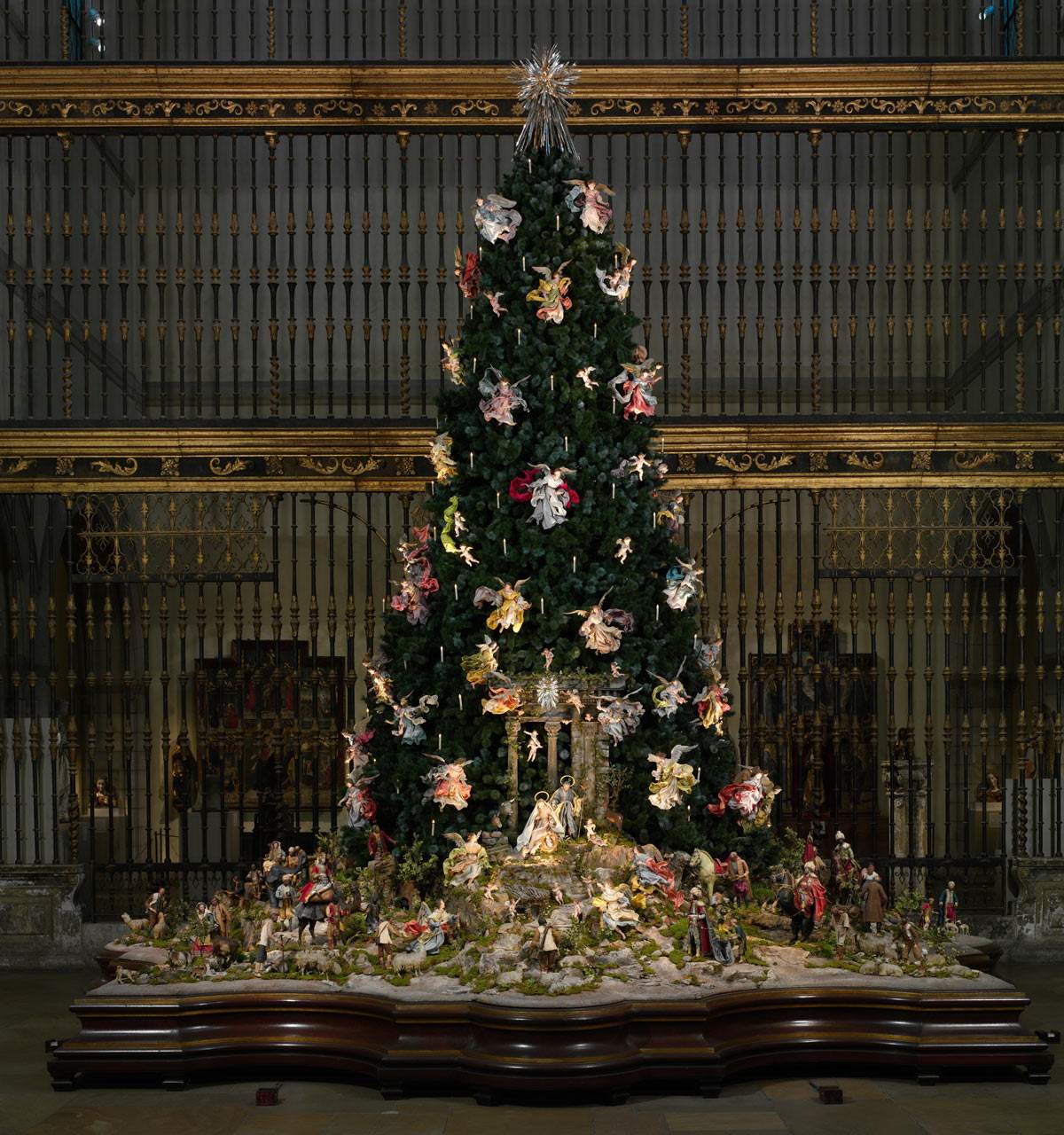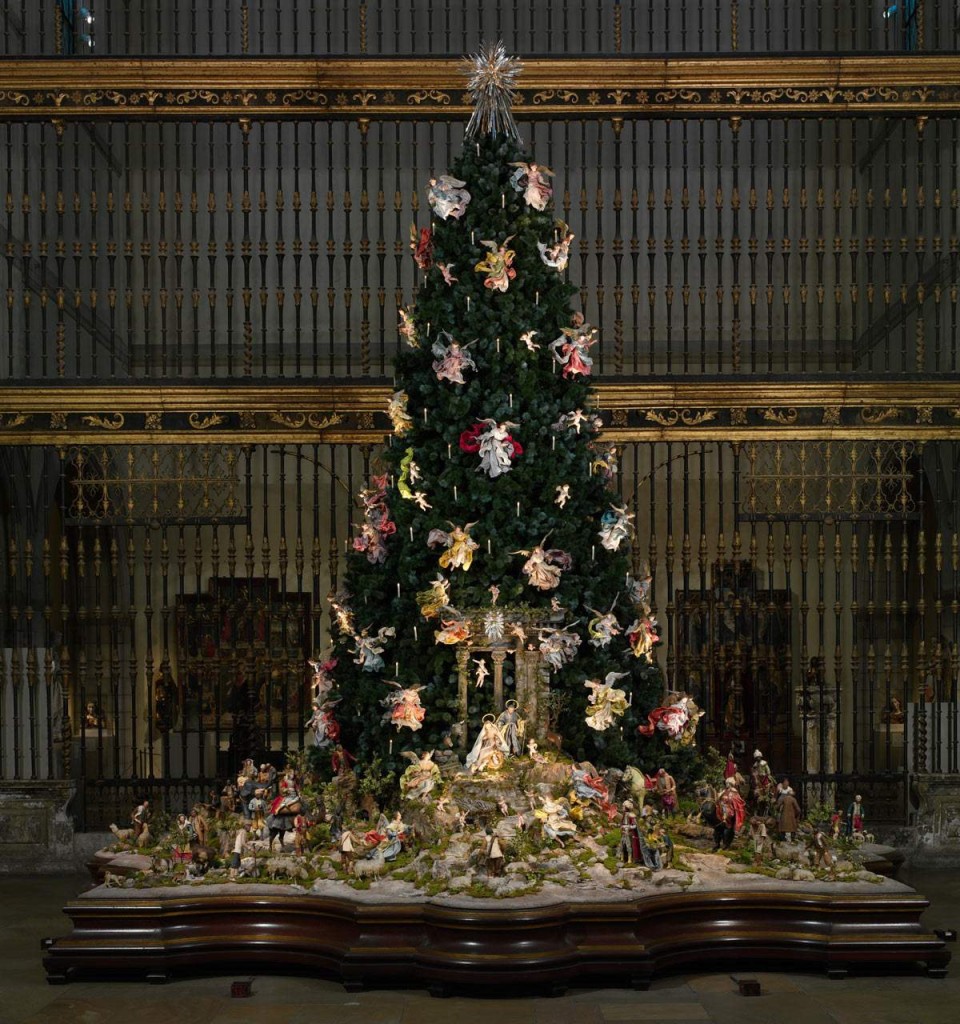
The magnificently lit, 20-foot blue spruce looms over a vivid Eighteenth Century Neapolitan Nativity scene. Tree-lighting ceremonies take place at 4:30 pm daily, with additional ceremonies on Fridays and Saturdays at 5:30 and 6:30 pm.
NEW YORK CITY — The Met continues a longstanding holiday tradition with the presentation of its Christmas tree, a favorite of both New Yorkers and visitors from around the world. The magnificently lit, 20-foot blue spruce looms over a vivid Eighteenth Century Neapolitan Nativity scene, enshrined in an abundant array of lifelike figures with silk-robed angels hovering above. The scene describes in detail the Mediterranean harbor town’s multicultural society.
The installation is set in front of the Eighteenth Century Spanish choir screen from the Cathedral of Valladolid in the museum’s Medieval Sculpture Hall. Recorded Christmas music and daily tree-lighting events add to the enjoyment of the holiday display.
In 1964, Loretta Hines Howard generously presented to the museum more than 140 Neapolitan crèche figures, dating from the second half of the Eighteenth Century. The varied assortment includes figures from the three traditional scenes of a complete Neapolitan presepio: the Nativity, with angels, shepherds and sheep; the procession of the three Magi, with their colorful retinue of attendants; and the varied and gay crowd of country and town people thronging the tavern, or inn, of Bethlehem — the diversorium mentioned by St Luke, where on the Holy Night there was no place for Mary and Joseph. Averaging between 12 and 15 inches in height, according to the position they were to take in perspective in the stage set, the figures are pliable and can be given poses at will, according to their facial expressions. Their bodies are made of tow and wire, their arms and legs are finely carved of wood, and their heads and shoulders are modeled of terracotta and accurately finished. Their attire, often enriched by accessories, jewels, and embroideries, is a sheer joy for the lover of folklore and Eighteenth Century costumes.
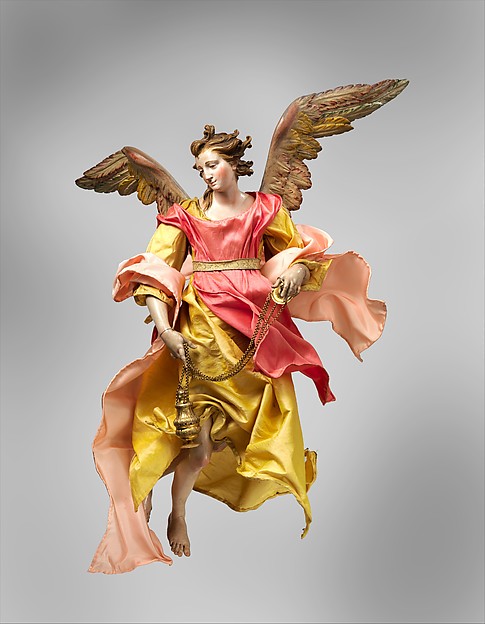
Giuseppe Sanmartino (Italian, 1720–1793), second half Eighteenth Century, Naples, Italy, angel, polychromed terracotta head, wooden limbs and wings, body of wire wrapped in tow, various fabrics, 17 ¼ inches high. Gift of Loretta Hines Howard, 1964.
According to a tradition that seems to be supported by stylistic comparisons with figures in the collections of Naples and in the vast holdings of the Bavarian National Museum in Munich, some of the winsome heads of the Howard angels are to be credited to the best Eighteenth Century masters: Giuseppe Sammartino (1720–1793), well known for his monumental sculptures in marble and in stucco, his pupils Salvatore di Franco, Giuseppe Gori and Angelo Viva, and one Lorenza Mosca (d 1789), who was employed at the Royal Porcelain Factory at Capodimonte and stage director of the Royal Christmas Crib.
Since Howard’s gift, the museum has recreated the Neapolitan Christmas crib scene, much to the delight of visitors during the holiday season.
Tree-lighting ceremonies take place at 4:30 pm daily, with additional ceremonies on Fridays and Saturdays at 5:30 and 6:30 pm.
The exhibit of the crèche is made possible by gifts to the Christmas Tree Fund and the Loretta Hines Howard Fund.
The Metropolitan Museum is at 1000 Fifth Avenue. For information, 212-535-7710 or www.metmuseum.org.

